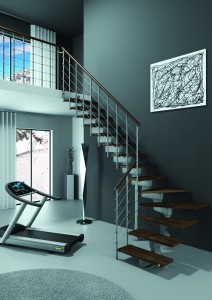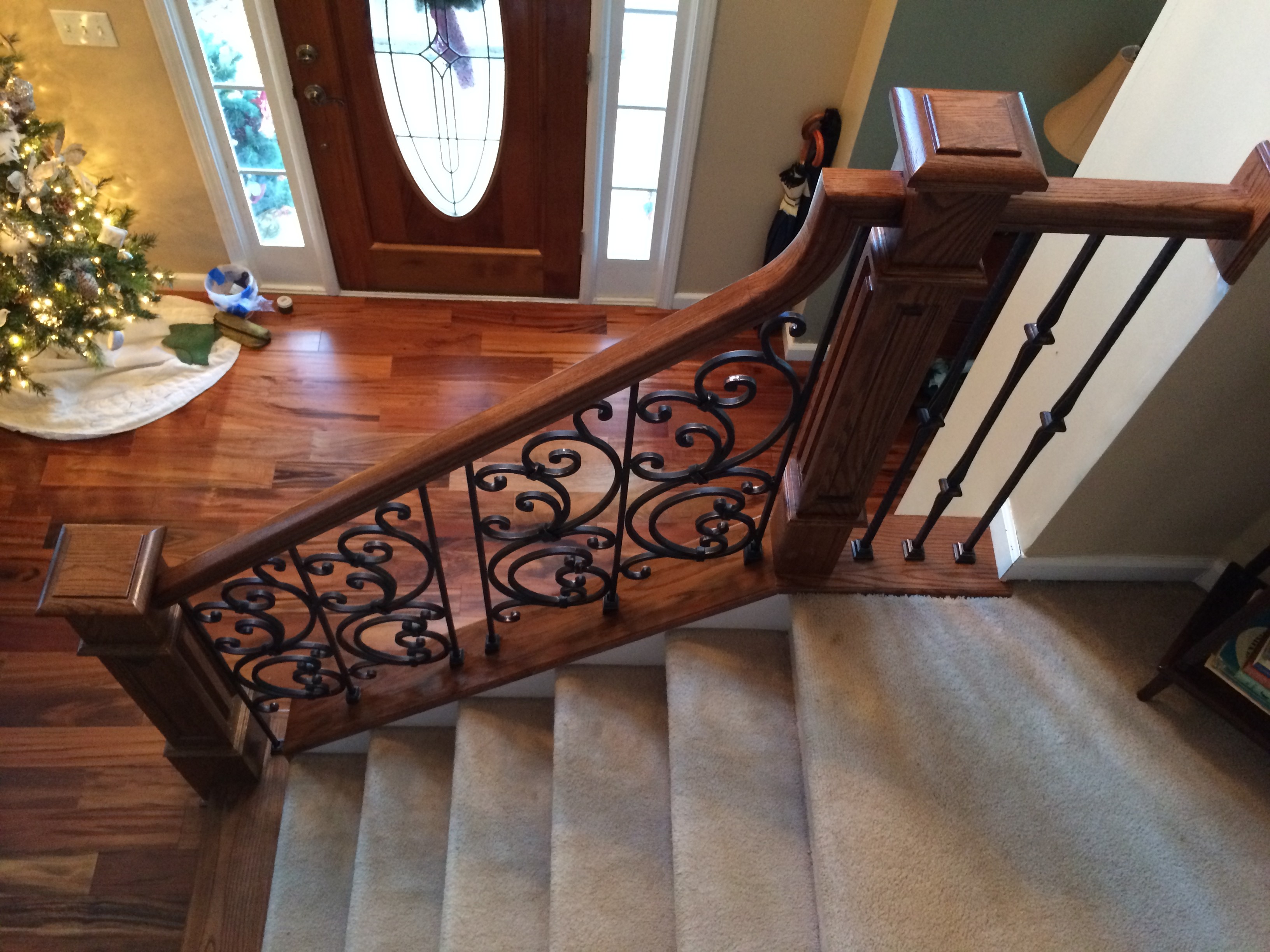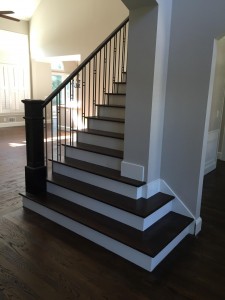A staircase is a simple and elegant way for people to move between floors. The layout, design and execution by the builder all play a part in determining how safely and comfortably a stair accomplishes this task.
Lingo to know: Tread: The horizontal board you walk on, usually at least 1 inch thick Riser: The vertical board between treads Newel: The post to which the railing is attached Runner: A carpet with woven edges that covers the middle of the treads and risers Stringer: The supporting structure of the stair
Safety First The horizontal distance from the front to back of the tread is called the run, and the vertical distance is the rise. As you will have noticed from the staircases you’ve walked on, the rise and run can vary. Rise-to-run ratio – The total of the rise and run should add up to 17 inches. Practically speaking, this means that as the run gets shorter, the rise should get steeper for the stair to feel comfortable as you walk. There are limits, of course. A rise of more than 8¼ inches is going to be too steep for many people.
Consistency – Even more important, the ratio of rise to run must be consistent. If you stumble or trip on a staircase, it is probably due to a tread or riser that is not the same size as the others. Our bodies get in a rhythm when climbing or descending, and even an inch of difference can be enough to throw us off. If you are thinking about adding flooring on top of existing flooring where it meets a staircase, keep this in mind. The treads may need to be adjusted as well. Another thing that makes a stair comfortable to use is a tread overhang. Although some modern staircases omit this detail, an overhang will keep heels from scuffing risers on the way down and help you find your footing on the way up.
Another modern-style detail is to omit the riser entirely. You’ll still have a rise, of course (you wouldn’t get upstairs without it), but it’s just empty space instead of a board. Building a stair this way means you won’t be able to hide the supporting structure of the stair: the stringer. In the stair pictured here, the stringer is made of steel.
Staircase Width
Most current building codes mandate that the clear width of a staircase be 36 in. between finish materials. Whether this dimension is sufficient depends on how the stairs will be used and whether they will have an open railing or will be enclosed by walls.
Bumping up the dimension just 4 in., to 40 in., in width can make a significant difference in how comfortable it will be to use that staircase.
If you think you will often have one person going up while one is coming down, you should make your staircase about 48 in. wide. Wider than that will be more costly or impractical, or the stair will be uncomfortable to use — and if it is too wide, you won’t be able to reach a handrail on the side of the stairs if you ascend in the center.
A generous width and two landings make this staircase easy to navigate.
Safety first, safety last. Happy climbing!



